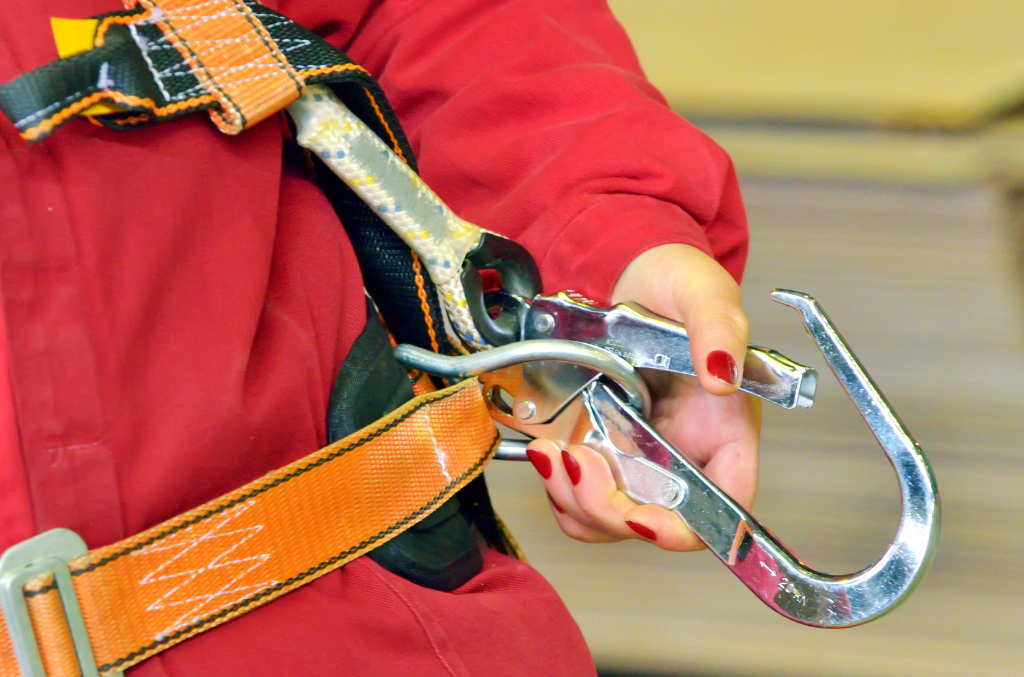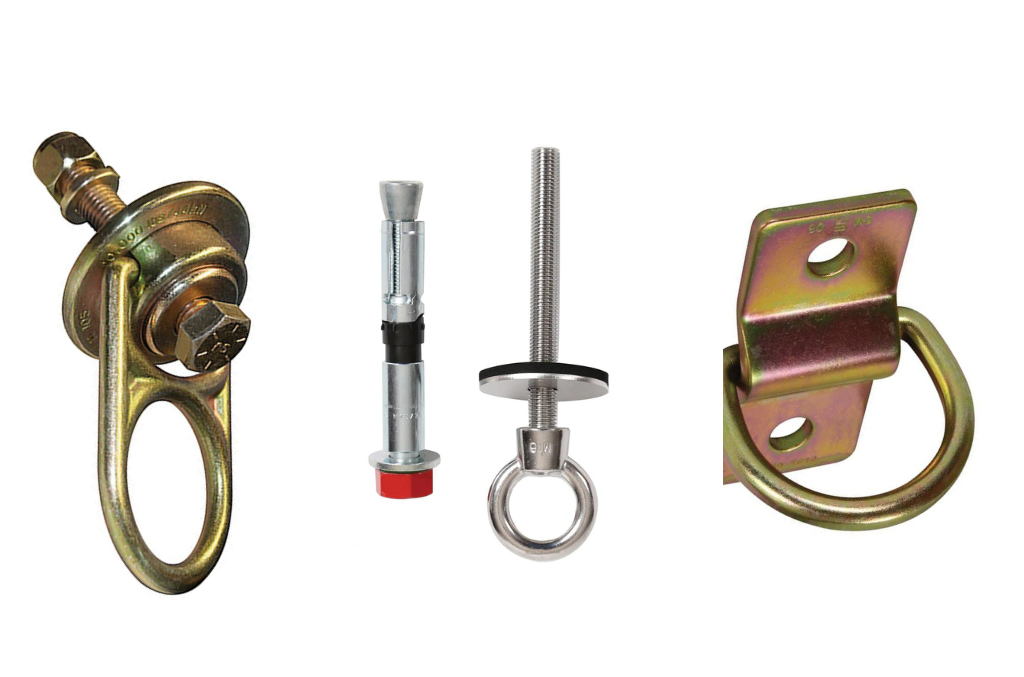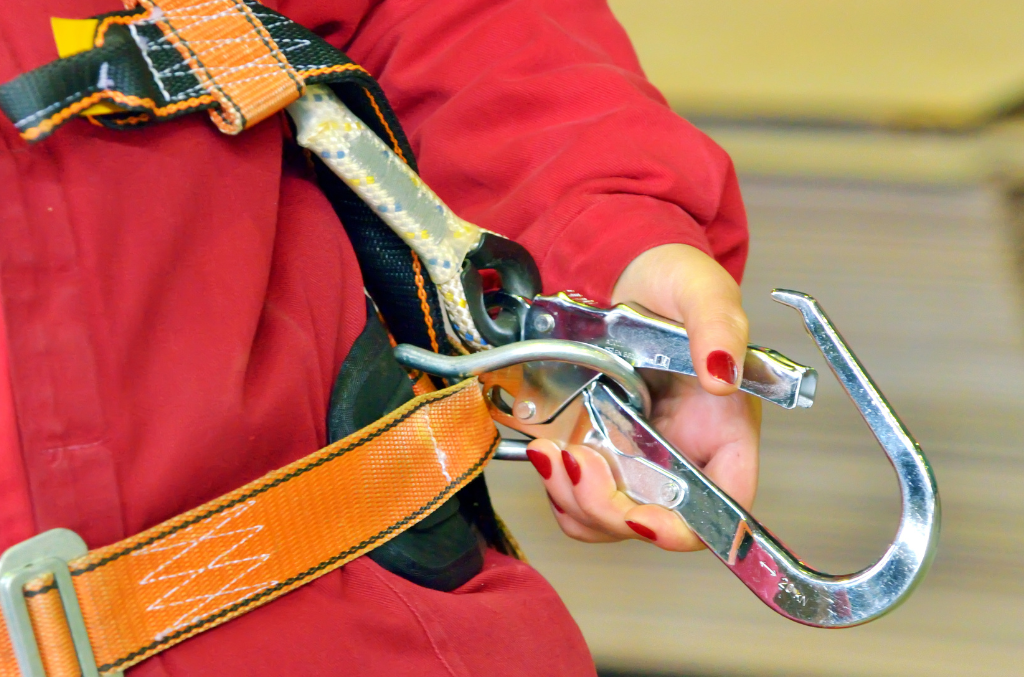Fall Protection Anchorage Connectors
Unveiling the Importance of Fall Protection Anchorage Connectors: An In-Depth Look
Safety is paramount in any workplace, but it’s particularly vital in environments where the risk of falls from a height is a real concern. In these settings, fall protection anchorage connectors play an essential role in keeping workers safe.
In This Article
What are Fall Protection Anchorage Connectors?

Fall protection anchorage connectors, often called anchors, are secure points of attachment for lifelines, lanyards, and other forms of fall protection equipment. These connectors act as the foundation of any personal fall arrest system, providing a stable point that supports the weight of a falling individual and halts their descent.
Manufactured from high-strength materials like steel or aluminum, these connectors are designed to withstand significant loads, often in the thousands of pounds. They can be temporary or permanent and are typically attached to structural elements like beams, columns, or floors.
Why are they Essential in the Workplace?
The importance of fall protection anchorage connectors cannot be overstated. They are the first line of defense in preventing serious injuries, or even fatalities, in the event of a fall.
A secure anchorage point can mean the difference between a minor incident and a major tragedy in workplaces requiring employees to work at heights, such as on scaffolding, rooftops, or high platforms.
Not only do these connectors protect individual workers, they also help companies adhere to Occupational Safety and Health Administration (OSHA) regulations, avoid costly fines, and maintain a reputation for safety.
In the next sections, we will delve into the different types of fall protection anchorage connectors, their applications in various industries, and how to choose and maintain the right anchors for your needs. Stay with us as we unfold the crucial role of anchorage connectors in ensuring workplace safety.
Understanding Different Types of Fall Protection Anchorage Connectors

Anchorage connectors are not one-size-fits-all. Different work environments and tasks necessitate different types of anchors. Understanding the different types of fall protection anchorage connectors can help ensure that you choose the right one for your specific needs.
Single-Point Anchors
Single-point anchors are designed for use by one individual at a time. They are typically portable and can be moved around to different locations as needed. These anchors are commonly used when work is being done at a single location, such as a rooftop or a specific spot on a construction site.
Multi-Point Anchors
Multi-point anchors, as the name suggests, offer multiple attachment points. This allows more than one worker to be connected to the anchor simultaneously, which is particularly useful in situations where a team of workers is needed in one location. These anchors are typically more permanent and require professional installation.
Roof Anchors
Roof anchors are specifically designed for work on rooftops. They can be either temporary or permanent. Temporary roof anchors are commonly used during construction or roof repair jobs, while permanent anchors are installed for ongoing maintenance tasks.
Concrete Anchors
Concrete anchors are designed for use in concrete structures. They are often used in construction or industrial settings, where workers may be required to work at height on a concrete structure. These anchors are typically embedded into the concrete during construction but can also be retrofitted into existing structures.
Each type of fall protection anchorage connector offers unique benefits and is suited to specific situations. Understanding their differences can help you choose the right one for your needs. The next section delve into the science behind these anchors and how they can save lives.
The Science Behind Fall Protection Anchorage Connectors
The core function of fall protection anchorage connectors may seem straightforward, but a significant amount of science and engineering goes into their design and functionality.
The Role of Physics in Fall Protection
The science of fall protection is largely based on principles of physics, particularly the laws of motion. When a worker falls, they rapidly gain speed due to the force of gravity. As part of a broader fall arrest system, the anchorage connector has to absorb and distribute this force to stop the fall without causing injury to the worker.
To achieve this, anchorage connectors are designed and tested to withstand tremendous loads. They must be capable of supporting at least 5,000 pounds per worker attached or be designed and installed as part of a complete personal fall arrest system which maintains a safety factor of at least two, under the supervision of a qualified person.
How Anchorage Connectors Can Save Lives
Anchorage connectors save lives by providing a secure attachment point for other fall protection equipment. When a worker falls, the fall arrest system goes into action. The lanyard or lifeline attached to the anchor tightens, the deceleration device slows the fall, and finally, the harness distributes the force of the fall across the worker’s body, sparing them from serious injury.
By arresting falls, anchorage connectors prevent workers from hitting the ground or lower-level objects, which could result in fatal injuries. They also keep workers from being suspended in the air for too long, which can lead to suspension trauma.
In the next section, we will explore the application of fall protection anchorage connectors in various industries and how they contribute to worker safety and regulatory compliance.
Industry Applications of Fall Protection Anchorage Connectors
Fall protection anchorage connectors are widely used across various industries, which is crucial in ensuring worker safety in environments where work at height is necessary.
Manufacturing and Distribution
Workers in the manufacturing and distribution sectors often need to access high platforms or work atop machinery and equipment. Anchorage connectors are essential in these scenarios, allowing workers to secure themselves when working at heights, thus minimizing the risk of falls.
Healthcare Facilities
While not immediately apparent, healthcare facilities also require the use of anchorage connectors. Maintenance and repair tasks often require staff to work at height. For example, changing light fixtures or repairing HVAC systems in high-ceilinged areas. Anchorage connectors ensure the safety of these workers.
Education Institutions
Similar to healthcare facilities, educational institutions also have maintenance needs requiring height work. Anchorage connectors are used to ensure that workers tasked with maintaining and repairing buildings, fixtures, and facilities remain safe while doing so.
Building Services
In the building services industry, which includes tasks like window washing, exterior repair, and roofing, anchorage connectors must be used. These jobs often require workers to be at great heights, where a fall could be fatal. Anchorage connectors, as part of a comprehensive fall protection plan, help to ensure the safety of these workers.
In the next section, we will provide tips for choosing the right fall protection anchorage connectors and discuss common mistakes to avoid. We will also cover the proper usage and maintenance of these essential safety devices.
Tips for Choosing the Right Fall Protection Anchorage Connectors
Selecting the right anchorage connector is a crucial step in ensuring worker safety. Here are some tips to help you make the right choice.
Factors to Consider When Choosing Anchorage Connectors
Work Environment: The type of work environment dictates the type of anchor needed. For instance, roof anchors are designed for roof work, while concrete anchors are suitable for concrete structures.
Permanent or Temporary: Consider whether you need a permanent or temporary solution. Permanent anchors are typically installed during construction, while temporary anchors can be installed and removed as needed.
Strength and Durability: Anchors should be able to support at least 5,000 pounds per worker attached. They should also be made of high-strength, durable materials that can withstand harsh conditions.
Compatibility: The anchor must be compatible with the other components of the fall protection system, like lanyards and harnesses.
Common Mistakes to Avoid
Ignoring Manufacturer’s Instructions: Always follow the manufacturer’s instructions for installation and use. Improper installation can compromise the effectiveness of the anchor.
Overlooking Regular Inspections: Anchors should be regularly inspected for signs of wear and tear. Damaged or worn-out anchors should be replaced immediately.
Assuming One Size Fits All: Different jobs require different types of anchors. Ensure you have the right type of anchor for each specific task.
In the next section, we will discuss how to use anchorage connectors safely and provide tips for maintaining them to ensure they continue to provide optimal fall protection.
Proper Usage and Maintenance of Fall Protection Anchorage Connectors

Proper usage and maintenance of fall protection anchorage connectors are pivotal to ensure maximum safety. Here’s how to use and maintain your anchorage connectors effectively.
How to Use Anchorage Connectors Safely
Follow Manufacturer’s Instructions: Always adhere to the manufacturer’s guidelines for using the anchorage connectors. This includes understanding the correct way to attach and detach the connector.
Ensure Proper Fit: Make sure the connector is securely attached to the structure and the fall protection equipment. Any loose or improper fittings can compromise safety.
Inspect Before Use: Before each use, inspect the anchorage connector for any signs of damage or wear. Do not use it if any damage is detected.
Tips for Maintaining Your Anchorage Connectors
Regular Inspections: Regularly inspect your anchorage connectors for signs of damage or wear. This includes checking for any signs of rust, cracks, or other damage.
Clean After Use: After each use, clean the anchorage connector to remove any dirt or debris that may have accumulated. Ensure it is dry before storage to prevent rust.
Store Correctly: Store your anchorage connectors in a dry and clean location. Avoid exposing them to harsh environmental conditions, which could lead to premature wear and tear.
Replace When Needed: If any damage is detected during inspection, replace the anchorage connector immediately. Using a damaged connector can compromise the safety of the worker.
In the next section, we will discuss the regulatory aspects of fall protection anchorage connectors, including OSHA regulations, compliance, and penalties.
Regulatory Aspects of Fall Protection Anchorage Connectors
Fall protection is not just a matter of best practice—it’s a legal requirement. Understanding the regulatory aspects of fall protection anchorage connectors is crucial for maintaining a safe and compliant workplace.
OSHA Regulations on Fall Protection
The Occupational Safety and Health Administration (OSHA) sets forth numerous regulations pertaining to fall protection. According to OSHA standards (29 CFR 1926.502(d)(15)), anchorage connectors used for attachment of personal fall arrest equipment must be independent of any anchorage being used to support or suspend platforms and must be capable of supporting at least 5,000 pounds per worker attached.
Moreover, OSHA requires that anchorages be designed, installed, and used under the supervision of a qualified person, and they must be inspected frequently to ensure their integrity and safety.
Compliance and Penalties
Compliance with OSHA’s fall protection standards is not optional. Failure to comply can result in hefty fines and penalties. More importantly, non-compliance can lead to serious injuries or even fatalities in the workplace.
In addition to OSHA, other industry-specific regulations, such as those set by the American National Standards Institute (ANSI), may also apply. Therefore, it’s essential to understand and adhere to all relevant regulations in your industry.
In the next section, we will discuss different fall protection anchorage connectors brands, highlighting what makes these brands stand out in the market.
Different Brands of Fall Protection Anchorage Connectors
The market for fall protection anchorage connectors is diverse, with numerous brands offering a range of solutions. Here, we spotlight some of the top brands in the market.
Top Brands in the Market
- 3M Fall Protection: 3M, through its Protecta and DBI-SALA lines, offers a wide range of fall protection anchorage connectors. Their products are known for their quality, durability, and adherence to safety standards.
- Guardian Fall Protection: Guardian is renowned for its innovative and high-quality fall protection solutions. Their anchorage connectors are designed with safety and ease of use.
- Miller by Honeywell: Miller is a trusted name in fall protection. Their anchorage connectors are designed to be strong, durable, and easy to install
- MSA Safety: MSA Safety offers a range of anchorage connectors designed to meet the needs of different industries. Their products are known for their quality and reliability.
- Petzl: Petzl is a leading name in vertical safety, with a range of anchorage connectors suitable for various environments, including construction, rope access, and rescue operations.
What Makes These Brands Stand Out?
These brands stand out for their commitment to quality, safety, and innovation. They offer a wide range of solutions to meet different needs and adhere to the highest safety standards. Moreover, these brands have a reputation for reliability and durability, which is crucial when it comes to safety equipment.
In the next section, we will conclude our in-depth look at fall protection anchorage connectors, summarizing their importance and providing final thoughts on choosing and using these essential safety devices.
Fall protection anchorage connectors are an essential component of workplace safety, particularly in environments where work at height is a necessity.
Recap of the Importance of Fall Protection Anchorage Connectors
These devices provide a secure point of attachment for fall protection systems, serving as the first line of defense against falls from height. They come in various types, each designed to suit specific work environments and tasks, and are made from high-strength materials capable of supporting significant loads.
Anchorage connectors protect workers and ensure compliance with OSHA and other regulatory standards, helping businesses avoid costly fines and maintain a reputation for safety.
Final Thoughts on Choosing and Using Anchorage Connectors
Choosing the right anchorage connector involves considering factors like the work environment, the nature of the task, the type of fall protection system being used, and the connector’s strength and durability.
Proper usage and maintenance are equally important, including regular inspections, cleaning after use, correct storage, and timely replacement when needed.
As we’ve seen, several top brands in the market offer high-quality anchorage connectors. Regardless of the brand you choose, the key is to ensure that it meets all safety standards and suits your specific needs.
Remember, there’s no room for compromise when it comes to fall protection. The right anchorage connector can mean the difference between a minor incident and a major tragedy. Choose wisely, use correctly, and stay safe.
Frequently Asked Questions (FAQ)
At IP Products, we offer a wide range of Fall Protection Anchorage Connectors to meet your needs. Browse our collection today and find the perfect Fall Protection Anchorage Connectors for your job. We are dedicated to quality, customer satisfaction, and fast shipping.

